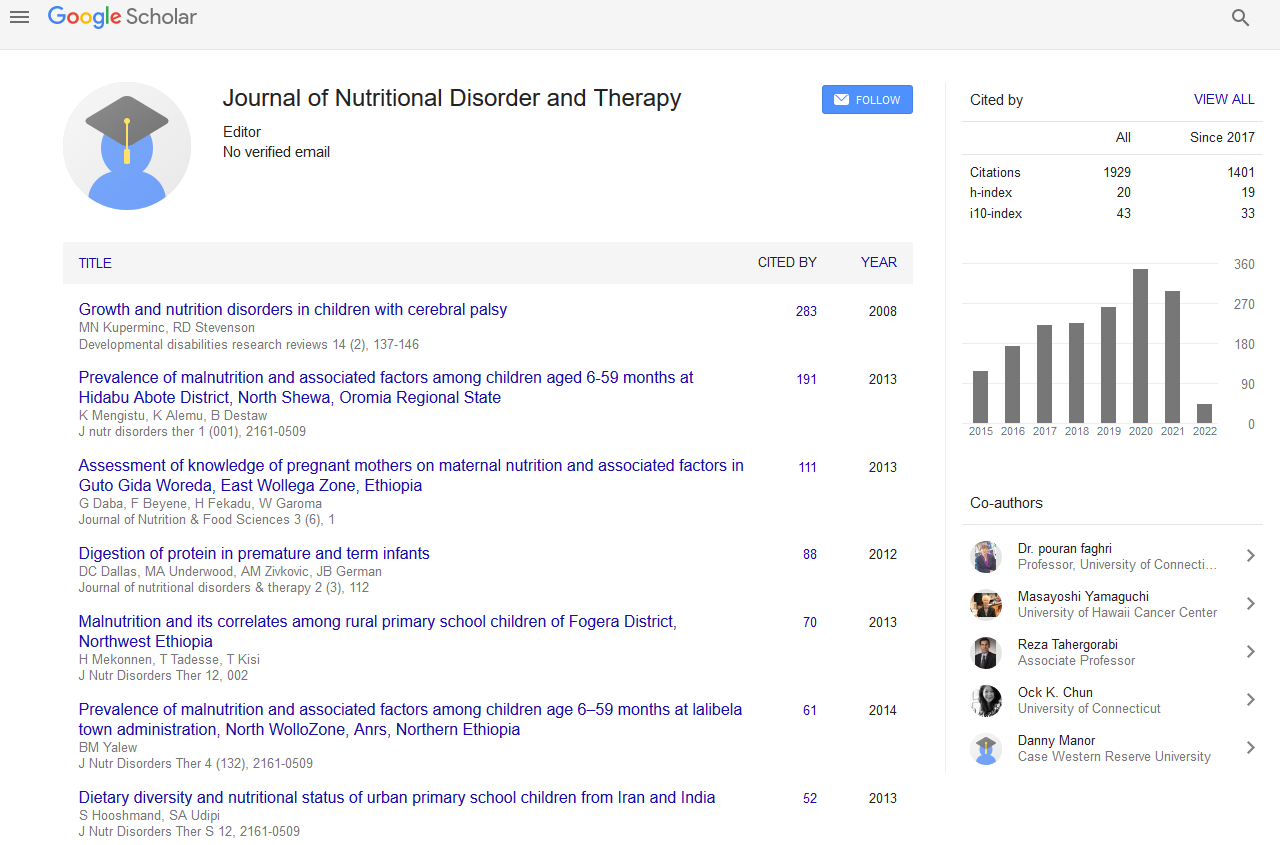Indexed In
- Open J Gate
- Genamics JournalSeek
- Academic Keys
- JournalTOCs
- Ulrich's Periodicals Directory
- RefSeek
- Hamdard University
- EBSCO A-Z
- OCLC- WorldCat
- Publons
- Geneva Foundation for Medical Education and Research
- Euro Pub
Useful Links
Share This Page
Journal Flyer

Open Access Journals
- Agri and Aquaculture
- Biochemistry
- Bioinformatics & Systems Biology
- Business & Management
- Chemistry
- Clinical Sciences
- Engineering
- Food & Nutrition
- General Science
- Genetics & Molecular Biology
- Immunology & Microbiology
- Medical Sciences
- Neuroscience & Psychology
- Nursing & Health Care
- Pharmaceutical Sciences
Obesity and Cardiovascular Risk
4th World Summit on OBESITY AND WEIGHT MANAGEMENT
January 09-10, 2024 | Webinar
Pedro Felipe Parra Velasco
Barcelona University, USA
Scientific Tracks Abstracts: J Tradit Med Clin Natur
Abstract:
Statement of the problem: Obesity is considered a pandemic of the present century and is associated whit severe non-communicable chronic diseases, especially cardiovascular diseases, which remains the leading cause of death in the world. Visceral adiposity is a usual localization for ectopic fat depots and increases the risk of cardiovascular diseases. Endothelial dysfunction in obesity explains atherosclerosis and higher risk of incident coronary artery disease. Further micro vascular disease caused by chronic inflammatory state increasing cytokines and reduces the Nitric Oxide, that chronic Inflammation has been characterized by the imbalance between proinflamatory and procoagulant, and anti-inflammatory and anticoagulant activities of the endothelium to generate a procoagulant state. Methodology and theatrical orientation: The PubMed, Medline and science direct databases were reviewed, of all the literature published on cardiovascular risk in patients suffering from obesity Finding: There is a strongly correlation between overall obesity and abdominal obesity; although, are two kind of patients either the ones with overall obesity but not abdominal obesity. Abdominal obesity is linked to increase cardiovascular diseases. A lot of evidence support have shown and recommended the waist circumference (WC) measurements with body mass index (BMI) applied in the clinical practice may add critical information and successful prediction of cardiovascular risk and mortality focusing on visceral adiposity. Atherosclerosis in the obese patient begins with fatty streaks resulting in thickening of the intima arterial layer. Obesity is considered a storm which accelerates this process by several mechanisms like insulin resistance through adipocytokines, endothelial dysfunction, hypercoagulability and inflammation. Several prospective epidemiological studies demonstrate that obesity and higher risk of incident coronary artery disease (CAD) are strongly linked. In addition higher measures of central adiposity, including WC and waist-to-hip ratio (WHR), were aligned with a higher risk of CAD and cardiovascular mortality independently of BMI (body mass index). Another important concept is the duration of obesity and abdominal adiposity, expressed as excess BMI-years and WC-years are stronger predictors of CAD, highlighting these measurements must be evaluate together. The chronic inflammatory conditions developed from the obesity are linked to abnormalities in the coronary microvasculature. Obesity has been classified as a chronic inflammatory disease and has implications in macrophages and adipocytes that generate an increase in cytokines and reduce the Nitric Oxide. The chronic inflammatory conditions developed from the obesity are linked to abnormalities in the coronary microvasculature. Coronary micro vascular disease is pathophysiologic ally associated with endothelial dysfunction and possibly to small vessel remodelling and also disturbing coronary blood flow; this micro vascular disease is independently associated with higher BMI. The endothelial dysfunction is usually characterized by the disrupt between secretion and release of vasoconstriction and vasodilation agents, pushing the vascular endothelial towards prothrombotic and proatherogenic effects. Vascular calcification (VC) is one of the mechanisms that influence vascular remodelling due to dedifferentiation of vascular smooth muscle cells (VSMC), alterations in elastin, collagen, and endothelial dysfunction. VC increases the chances of cardiovascular mortality and morbidity, especially in individuals with obesity, type 2 diabetes mellitus (T2DM), and chronic kidney disease. Finally, several studies have indicated that gut micro biota plays a contributing role in atherosclerosis through modulating inflammation and the secretion of microbial metabolites. Recent studies showed the influence of gut disposes and progression of atherosclerosis and cardiovascular disease. Bacteria’s like Akkermansia muciniphila promote barrier function and have attenuating effect against atherosclerosis. Conclusion: Obesity is linked to major risk of CVD and is directly proportional to the amount of excess weight and exposure time. Endothelial dysfunction and vascular calcification are the main changes that lead to an increase in cardiovascular events in this group of patients. It is also important to take into account the intestinal micro biota as an important factor that influences CVD.
Biography :
Pedro Felipe Parra Velasco is a distinguished professional with a background in Internal Medicine from Universidad Libre. He further advanced his expertise by specializing in Cardiovascular and Obesity at Barcelona University, showcasing a commitment to addressing critical health issues. His academic journey also includes the completion of a Master's in Health Care from IOCIM, reflecting a comprehensive understanding of healthcare management and delivery. Pedro has augmented his skills with a certification in Digital Health Transformation from Columbia University, demonstrating a forward-thinking approach to healthcare in the rapidly evolving digital landscape. With this impressive educational and professional foundation, Pedro Felipe Parra Velasco is well-equipped to contribute significantly to the field of medicine and healthcare innovation..


